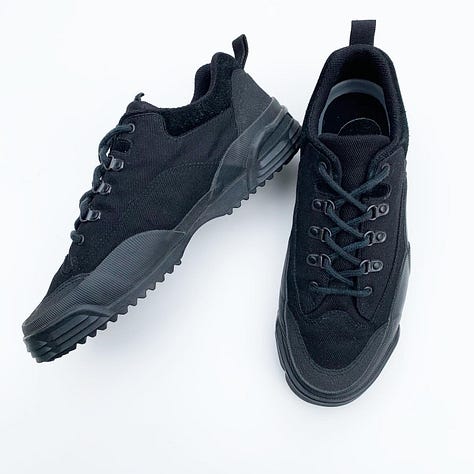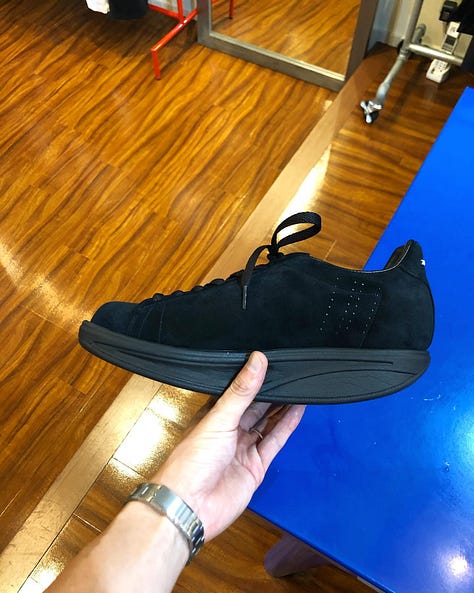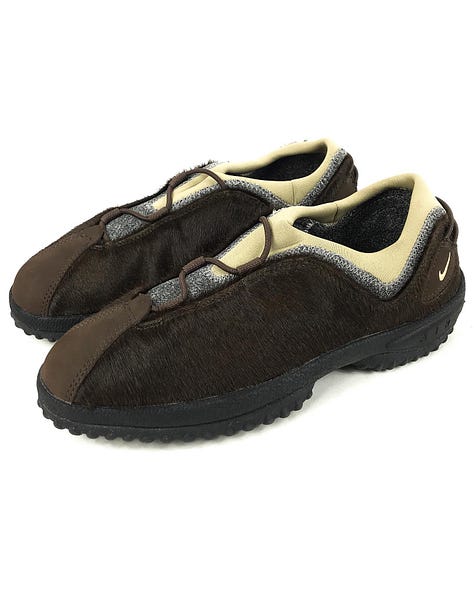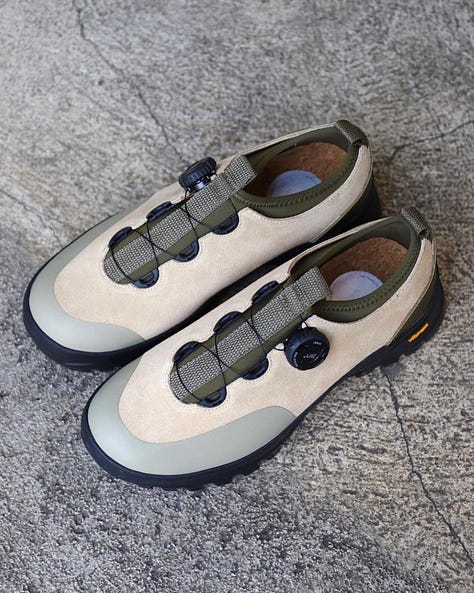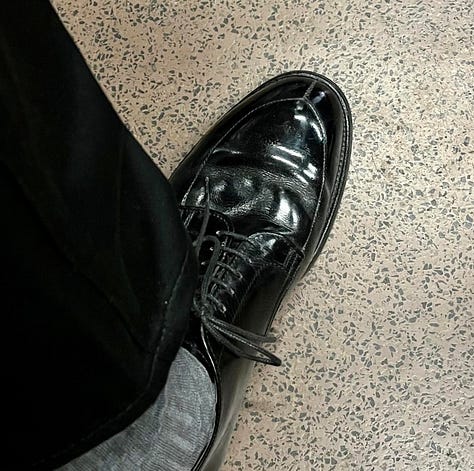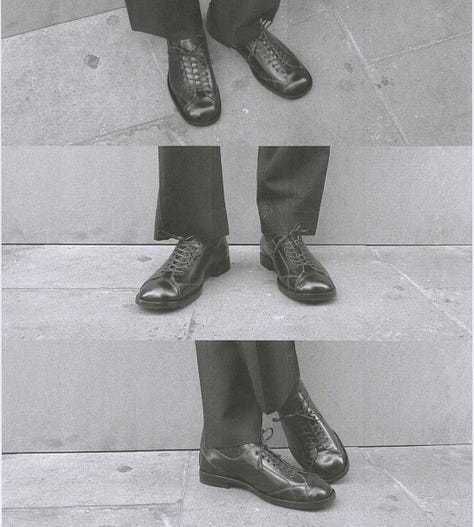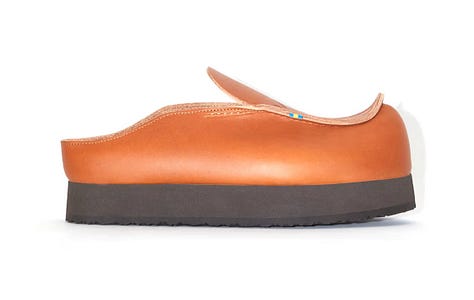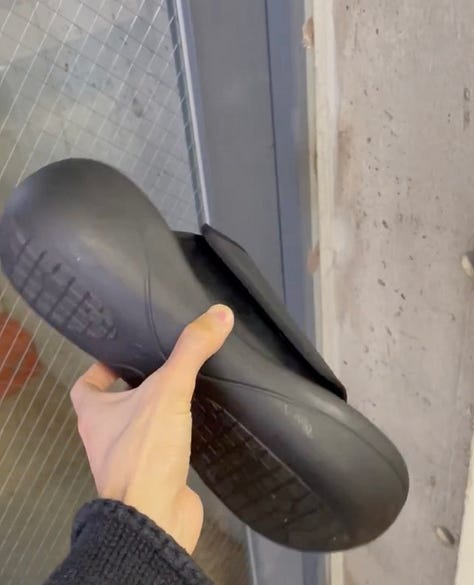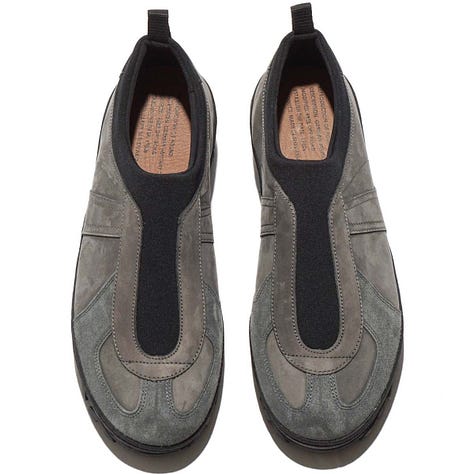Your Next Pair
Everything began with a pair of Nike sneakers.
I recall vividly, back in my fourth grade, when the predominant footwear at school were mainly Double Star and Warrior shoes. The relatively affluent children, donned in uniformity, sported those white sneakers adorned with flashing lights at the heel and velcro straps over the tongue. At that time, Nike had yet to establish its flagship stores in China; only multi-brand retailers operated under regional distributors. In Wuhan, the store I frequented at the New World department store introduced Nike sneakers for children that year. My parents bought me a pair of Nike tennis shoes. I can't recall the model, but I distinctly remember wearing them until the shoelaces snapped, and the sole started to detach from the upper — my first and last time wearing out a pair of shoes. I had zero send of fashion trend then, but I knew that the swoosh on these shoes were a symbol of cool.
The second pair etched deeply in my memory was my first pair of Nike Air Force Ones. It was the year my father relocated to Chengdu for work, residing not far from Chunxi Road. Being an avid shopper, he stumbled upon a skateboard shop during his leisure time—a cradle of Chinese street fashion, as ubiquitous as its global counterparts, all originating from skate shops. At that time, except for a few stores like Fly in Shanghai, which had authorized brands like Nike SB, most shops were stocked by shop owners who personally scoured the markets of Guangzhou and Hong Kong. Real goods, knock-offs, bootlegs and factory rejects coexisted in great harmony. Although Western brands were gradually penetrating Chinese department stores, their presence was limited due to marketing segmentation. Even the best merchandise displayed in these stores equated to nothing more than what one might find in American chains like Foot Locker or Macy's. To stand out, one had to venture to Hong Kong or these niche boutiques. Later, browsing through Japanese fashion magazines, I discovered that those AF1s were actually a special edition West Indies. It's amusing that twenty years later, Nike reproduced the same pair. When I saw them in Nike's catalog, it stirred myriad emotions within me. Although it marked a full-circle moment, I refrained from purchasing a pair to commemorate. Sometimes, stories linger better in the recesses of one's mind. By that time, I was already in boarding school, navigating the early stages of understanding what was cool, about girls, and love. Though I was enamored with soccer, the girls in school were more drawn to boys who played basketball. After all, tall boys, flashy basketball shoes, and the allure of manga Slam Dunk were an irresistible cocktail. Consequently, the boys who played basketball vied for attention that rivaled peacocks at Pitti Uomo. Jordan, VC Shox, T-Mac, Kobe 1 & 2, Answer, Question — it was my first time realizing that a pair of sneakers could cost upwards of thousands of yuan, but also that a sport could captivate both men and women with each other. Here I was, being the only person in Air Force 1 in the entire school, I faced ridicule from many, but it was mostly a lack of comprehension. Interestingly, a year later, the same boys who wore the latest basketball shoes gradually began to wear Nike Air Force 1s, Adidas Superstars, and various retro models, while I was already contemplating what my next pair of shoes would be. My desire to be ahead of the curve remained unchanged over the next twenty years. The only thing that changed was the industry, ever more expansive and complex. I'm far from being a type A personality who seeks to be first in everything, but there are certain things in life I refuse to compromise on — shoes and clothes being among them.
Consequently, with almost twenty years of experience in the fashion industry, albeit not an expert in footwear, I've gleaned some personal philosophies regarding footwear. Here are a few, purely subjective, insights:
Comfort. Shoes are always on your feet, your feet always on the ground. Sometimes, in the rain, roots sprout from beneath your feet, intertwining with trees, sharing the same breath and exchanging secrets. Whether you dress from the head down or toe up, footwear constitute literally the most down-to-earth aspect of attire. If your feet aren't at ease, it inevitably affects circulation, turning one’s face grey. Of course, comfort is subjective. I remember several years ago, many women's fashion buyers claimed Gianvito Rossi shoes were the most comfortable they'd worn. What's more intriguing is that for every hundred people who complain about how uncomfortable Dr. Martens are, another hundred will attest to their unparalleled comfort. This dialectic resembles very much like contemporary politics: every time you hold something equal to absolute truth only to find out just as many people believe in just the opposite. For me personally, the standard for comfort is simple: fit and breathability. Thanks to the fortuitous overlap of my career and passion, I've likely worn over a thousand pairs of shoes in nearly forty years, especially between the ages of twenty and forty. While I can't claim to know more than anyone else, I’m confident my share of mistakes exceeds the mean, median, and mode. I've also learned that certain things, despite their apparent allure, are best left untouched. For instance, the current trend in footwear leans towards thinner soles and narrower widths. While I agree they look stylish on some people, I refuse to coerce my feet into something they're not compatible with. Surely, there will be someone who’d claim they found the most comfortable ballerina flats or Mary Janes. I’d like to ask them if they have ever put on a pair of Mephistos.
Trousers. The greatest secret to footwear lies not in the shoes themselves, but in their upstairs neighbors. I recall back in 2015 when I worked as a footwear buyer. During that era, post-hipster but pre me too and normcore, the streets of New York were mostly adorned with Vans Authentics. Kanye had just got in bed with Adidas, and the first Yeezy 350s resembled little more than socks with soles. At the time, his fashion guru of choice was Jean Touitou, the god father of slim jeans, Justin before JJJJound. However, during a business trip to Paris Fashion Week, at a fashion boutique The Broken Arm, I saw Salomon running shoes dominating the shelves. This was almost 10 years before Salomon became what is now, when they didn’t even have a lifestyle design team, and the store predominantly stocked professional outdoor running style like the Speedcross. The employees there, either in Salomon or Asics running shoes, paired wth slightly baggy skate pants or slouchy jeans — a stark contrast to the slim-fit jeans prevalent across the Atlantic. It was a eureka moment for me, and upon returning to work, I swiftly replaced all "skinny pants shoes," either sending them to deep markdowns or canceling orders overnight, and replaced them with running shoes and dad sneakers. It wasn’t an easy decision at the time, as those slim pants shoes, while experiencing a slight decline in sales year over year, remained top sellers. Six months later, my new assortment didn't fare as well as anticipated. The reception to the new designs was lukewarm. Fortunately, the CEO of the company was supportive, suggesting we persist for another season. Luckily a year later, dad sneakers finally gained traction. What was once a top-selling brand Vans suddenly was replaced by a myriad of chunky sneakers. The best selling pants that year? Not Levi’s 511 but Dickies 874.
“The running into.” The fascinating aspect of being human lies in certain phenomena that defy rational and scientific explanation. Even with the advancement of AI, I doubt machines will one day have hidden desires, spill their guts out after a few glasses of wine, or have vivid and wild dreams. It's akin to twenty years ago when I first felt the urge not to wear the same shoes as everyone else; this impulse has not changed a bit today. I've deliberated with my therapist on the origins of such impulses, yet besides attributing half nature half nurture, I’m at loss with a satisfactory answer. I wonder if I'd cared about shoes or clothes at all if I were six feet tall in high school, with basketball skills and looks like Rukawa Kaede from Slam Dunk. But what’s funny was that none of the high school basketball boys turned out a ball player; meanwhile, I evolved into a professional fashion merchant, and have been making a living with judgement and taste. The convergence of interests and profession harbors both ups and downs. Just as if you love playing soccer with friends, but tasked to play from 9 am to 5 pm everyday, and required to win every game or face a forever ban, few would relish even their favorite pastime under such conditions. The irresponsible adage "do what you love, and you'll never work a day in your life" epitomizes capitalism's most potent propaganda. While I may never stop buying shoes, I’d tried to make the process slightly more challenging. If I can’t have Amex Centurion Black, at least let me get the black belt of shoe shopping. Isn’t the essence of fashion the secret game of fitting into certain insider groups while maintaining a safe distance from others while looking like you aren’t trying after all? When I was younger, I’d only buy limited edition shoes, the more obscure the better. These days while I still prefer certain styles, I find it more interesting to go with styles that fit the era. Things that belong seem a lot more attractive that things that stand out for me. After all, we're all racing against time, and time's the one who always wins. However, this isn't about getting used to it either. For that is too passive, plus no one wants to admit defeat to a corporate’s marketing team. Even if one were to swim against the current, at least they’ll earn everyone’s respect, and ultimately adding their own paint strokes to this glorious painting called humanity. So if you ask me if I mind wearing the same shoes as someone, my answer now would be: it depends, on with whom.
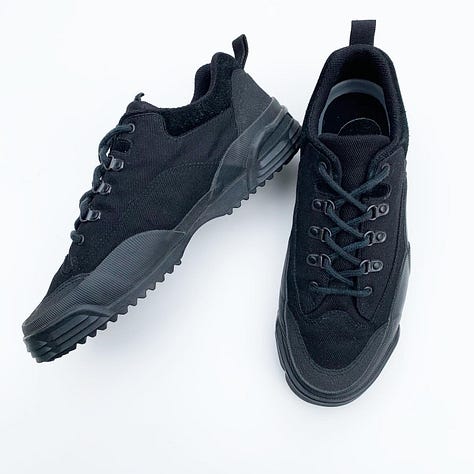
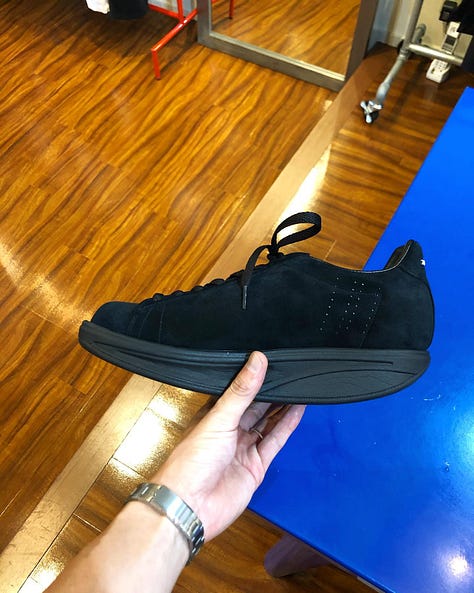
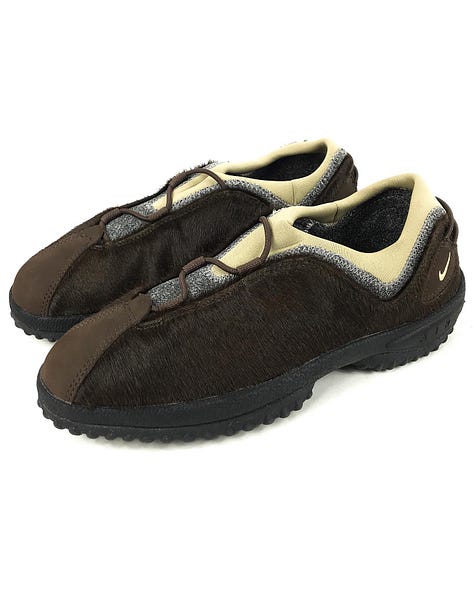
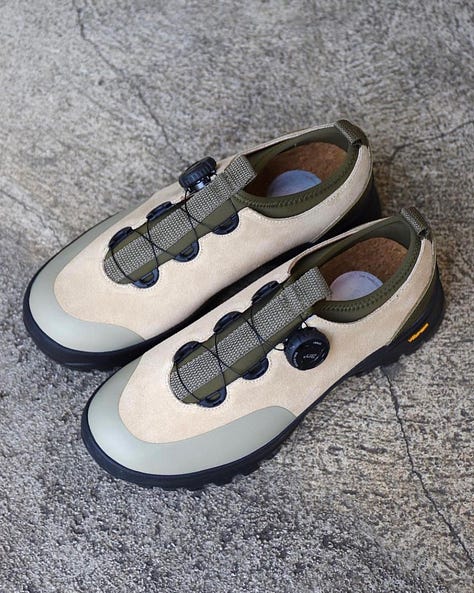
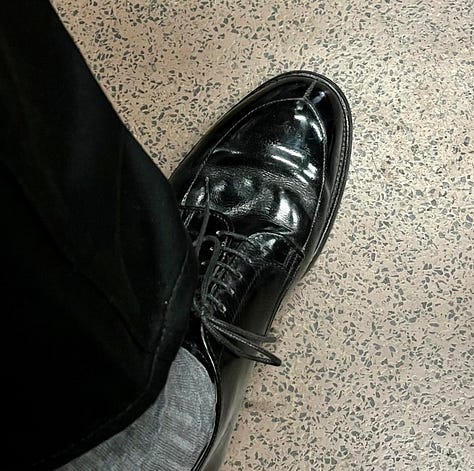
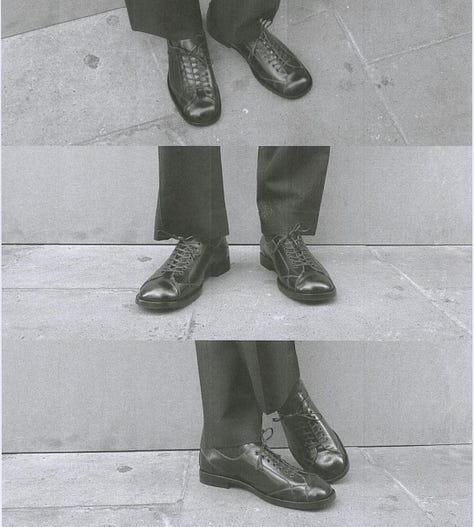
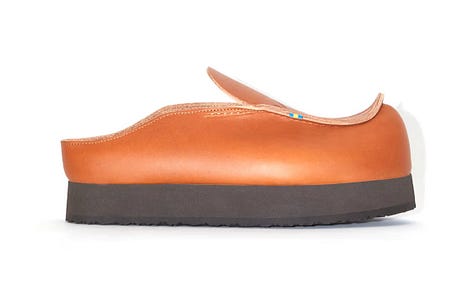
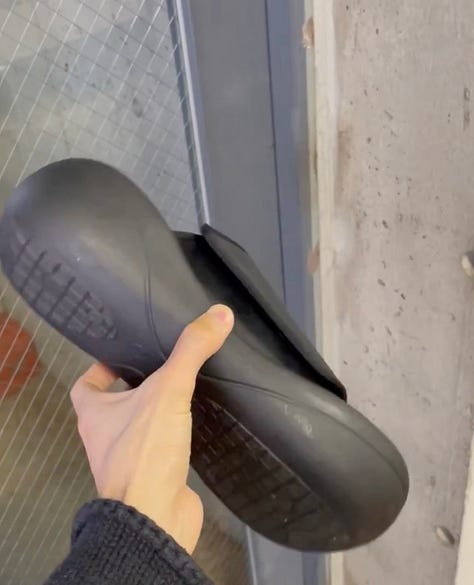
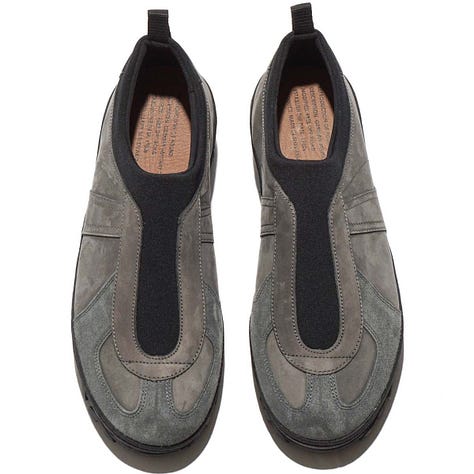
你的下一双鞋
一切都从一双Nike的童鞋开始。
记得那还是我小学四年级的时候,学校里的鞋主要以双星与回力为主,家里比较富裕一点的孩子都清一色地穿着后面闪灯前面velcro的白色球鞋。那个时候Nike还没有直营店,只有地区经销商的多品牌集合店。武汉我那时经常去的是新世界的一家,卖童装的一楼那一年第一次引进了Nike的童鞋,我爸妈给我买了一双Nike的网球鞋。型号我不记得了,但我深深记得穿到鞋带断掉,鞋头与鞋底快要脱开,也是我人生第一次最后一次穿破鞋底。那时对时装没有任何认识,只是知道这鞋上的钩钩很牛逼。
第二双记忆深刻的鞋的是我的第一双Nike Air Force One。那年父亲调去成都工作,住在离春熙路不远的地方。爱逛街的他工作之余找到了一下滑板店,中国潮流的起源,跟全世界一样,也都始于滑板店。那时的滑板店除了个别的几家例如上海的fly有Nike,Adidas等品牌的授权,全是老板/老板娘从香港广州市场亲自扫货。真假混杂,A货B货,剪标原单,因有尽有。那时西方品牌也慢慢进入中国的百货商店,但由于店面形象级别不够,店里摆的行货最好也是相当于美国Foot Locker以下,Macy’s级别产品。想要有与众不同的打扮,要么去香港,要么去这种潮店。后来看日本潮流杂志知道,那双AF1竟然还是West Indies的别注版。有意思的是20年以后Nike复刻了同一双鞋,我在Nike的catalog看到的时候感慨万千,虽然是一个full circle moment但也没有下手一双维以纪念。有时故事存在脑子里可能更好。那时的我已在住校念高中,对酷,炫,女孩,爱情也开始有了最初的认识。那时的我迷足球,但学校里的女生更爱的是打篮球的男生。毕竟身高,球鞋加上灌篮高手是一杯难以抗拒的鸡尾酒。打篮球的男孩们也因此像Pitti孔雀斗一样争奇斗艳。Jordan,VC Shox,T-Mac,Kobe 1&2,Answer,Question,第一次知道一双球鞋可以花掉上千人民币,第一次知道一种体育可以让男男女女倾城倾倒。那时做为全校唯一着AF1的我被不少人笑话,但更多的是不理解。有意思的是一年以后那群争先恐后穿最新篮球鞋的男孩慢慢开始穿起了AF1,Superstar跟各种复古鞋款,而那时的我却已经在想我的下一双鞋会是什么。有意思的是这种想要先人一等的念头在后来的20年也没怎么变,变的只是越来越大,越来越复杂的圈子。我远远不是事事要第一的type A的人,但人生有那么几件事我是怎么也不会让步的,鞋与装算其中之一。
也因为如此,加上在时装圈里也摸爬滚打了快20年,虽算不上足下通,但也悟出一些与足履有关的处世哲学。如下且纯属个人见解。
1.舒适第一。鞋永远穿在脚上,脚永远踩在地上,下雨的时候有时足下长出根,与树相连同呼吸共命运。不管你的穿衣中心思想是从帽往下还是自履而上,鞋是身上最地气的一部分,如果足不通,必导致血管不通畅,脸范青灰。当然舒适的定义对每个人都不一样。我记得数年前不少女装买手说gianvito rossi是她们穿过最舒服的鞋。更有意思的是每有100人说Dr Martens有多伤脚的时候就会有另100个人说这如何是他们穿过最舒适的鞋。这样的辩证倒挺像当今的政治:每次觉得自己相信的是绝对唯一真理的时候突然发现另一群人以同样的热诚坚守完全相反的观点。对我个人来说舒适的标准很简单:合脚,透气,不伤脚。因为事业和爱好幸运的重叠,我快40年来脚上穿过的鞋应该不少于1000双,特别是20-40岁之间,虽不能说我懂的比谁都多,但我可以说犯过的错误应该在平均数,中位数跟众数之上,也学会了哪些东西虽看上去实在吸引人但最好还是不要碰。比如说现在鞋的趋势是往薄跟窄走,我也同意在某些人身上确实很有帅,而我虽心有余力也足,但足却无力,而这个年纪的我也一定不会跟自己的脚过不去。当然也肯定有人说谁造的Ballerina或者Mary Jane有多舒服,我只想对这些人说不如先试试mephisto再下结论。
2.裤子/裤脚。穿什么鞋最大的秘密其实不在鞋的本身,而是他楼上的邻居。我记得2015年自己做鞋类买手的时候那个时代在hipster之后,me too与normcore之前,纽约满街上看到的大多还是Vans Authentics。那时Kanye刚跟阿迪达斯共枕,第一双的yeezy 350也基本就是一双带鞋底的袜子,那时的他信奉的时尚教主还是Jean Touitou,窄身牛网的鼻祖,JJJJound前的JJJJound。而在巴黎时装周出差的我第一次看到Broken Arm里面放的却全是Salomon的跑鞋,当是Salomon还没有被潮流化,基本没有lifestyle的团队,店里有的也都只是专业的户外跑鞋例如Speedcross。店里的员工脚上着的也不是Salomon就是Asics的专业跑鞋,稍往上看大家的裤子竟全是稍肥的滑板工装或者牛仔裤,丝毫没有大西洋彼岸的范本。那时我脑子里灯泡条件反射地一闪,回到工作把所有的“窄裤鞋”要么清仓要不取消订单,一夜之间全换成了跑鞋跟老爹鞋。当时其实顶着不小的压力,因为那些窄裤鞋虽每年销量都略有下滑但仍是畅销款。6个月以后我上的款销售也并没有像我想象的顺风顺水,新定的鞋反响很一般。幸运的是当时公司的CEO很支持,说不如再坚持一个季度。一年以后,老爹鞋终于一炮打响,当时公司的第一卖座的鞋从Vans180度转身成为各种老爹鞋。更有意思的是?那年公司第一卖座的裤子也从细身牛仔变成了板仔最爱的Dickies 874。
3.撞。做人有意思的地方是就有一些理性跟科学解释不了的事情,哪怕AI技术再发达我仍怀疑机器人会有一天能像我们一样会有潜在的欲望,会喝醉以后说一些平时不会吐的真言,会做奇奇怪怪的梦。就像20年前我就有了不想跟大家穿一样的鞋的冲动,20年后这样的冲动丝毫未减。我也跟我的therapist探讨过这样的冲动到底从何而来,除了一半基因一半父母养育也没有教科书一般让人满意的答案。我也想过如果高中时候我身高一米八,篮球技术赛过流川枫我会不会根本一点也不鸟我脚上的一双鞋。但有意思的是高中打篮球的那一群人也没有一个成为了专业篮球手,而我竟成了一位拿眼光与判断吃饭的买手。兴趣爱好与事业重叠其实是有弊有利的事情,就好似如果你酷爱的就是跟一群小伙伴踢球,当如果叫你天天从9点踢到5点,并且每场都要赢,而且如果输到一定场数你就再也不能在这个场子踢了,我想也没有谁愿意在这样的情况下做哪怕是自己最爱的事情吧。那句不负责任的“do what you love you’ll never work a day”应该是资本主义下最propaganda的洗脑工具了。鞋虽买不尽,但工作爱好也成了购物精的自己总要给自己一点难度吧。申请不到黑卡,起码也要练成黑带,对付自己卑微的虚荣心。更何况时装的精髓不就是往一群人小心靠的同时并拼命往另一群人保持安全距离的心理游戏吗?年轻的时候自然天真的一味地要“限量”,少就是好。现在虽还是有自己的坚持,但慢慢发现自己更喜欢跟一个时代更相称的东西。脱景而出不如人景合一,况且和时间赛跑输的永远是我们。但这也不同于适应,适应太为被动,适应以后唯一的赢家只有品牌的市场营销部。哪怕做与一个时代相反的事情也好过适应,毕竟那是只属于自己的足迹,而最终也一起成为一个时代的烙印。所以现在我对撞鞋的回答是:有点介意,也不太介意,但介意的是与谁撞。
说了这么多又跑题,下面是我最近觉得让我有新鲜感的几双鞋。那你的又是什么?
